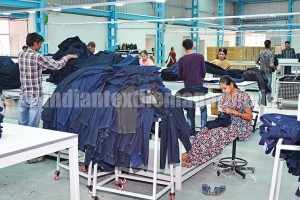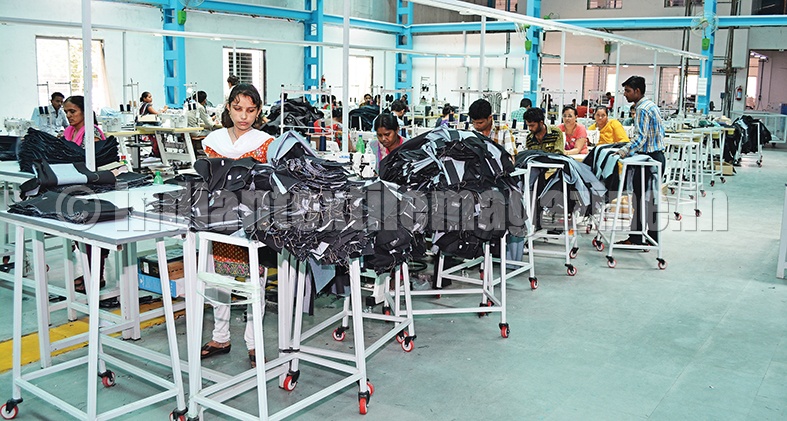Globe Textiles (India) Pvt. Ltd., an Ahmedabad-based star exporter of yarns, fabrics, home textiles and readymade garments, recently set up a 50,000 sq. feet facility dedicated to manufacturing and exporting denim jeans in an Apparel Special Economic Zone in Ahmedabad.

This new cut, make and stitch facility has the capacity to manufacture 50,000 garments per month, raising the group’s combined capacity to 150,000 pieces currently. Next production target is set at 250,000 pieces per month with future plans to hike the capacity to 400,000 pieces per month.
Setting up an apparel retail store way back in 1998, Mr. Bhavik Parikh, Managing Director, Globe Textiles, also started importing shirts from Thailand alongside to cater to the domestic market. However, change in import regulations shrank margins and made the business redundant. Next, on the basis of the already established contacts, he ventured into fabric exports to readymade garment producers in Thailand.
With passage of time, Globe forayed into contract manufacturing of denim jeans for leading denim brands across the world, and today, besides denim jeans manufacture and exports, it also ships yarn, printed fabrics and home textiles to overseas markets.
Mr. Parikh says that 80 per cent of their denim jeans production is currently exported and they wish to tip the scales to 40 percent in favour of the domestic market, with the rest accounted for by exports, while, at the same time, exports will always remain the mainstay of their business.
“Globe Textiles is concentrating on producing only denim garments and that too just denim jeans for men and women as they will never go out of vogue. Rising demand is anticipated in India where percapita consumption of denims is a mere 0.4 pairs per year while it is 4 pairs in the US,” Mr. Parikh states.
He adds that Globe Textiles has bought the best quality stitching machines from Juki, the world famous Japanese producer of stitching machines, for the new facility, to ensure best quality stitching of denim jeans.
Referring to glut in the Indian denim fabric market due to over capacity, Mr. Parikh comments: “Indian garment companies give a miss to potential export markets which offer huge volumes at low margins, but concentrate only on domestic markets that generate sizeable margins at low volumes.”
Turning the subject to his company, Mr. Parikh is of the firm opinion that Globe Textiles’ forte lies in contract manufacturing and by offering its best services to their clients, their growth is confidently assured.
According to him, Singapore, Malaysia and even the US are potential export markets for Globe Textiles. Last year, Globe also forayed into the home textiles segment with bedsheets, by first wetting its foot in the domestic markets and now is exporting on an average 3-4 container loads per month.
On the advent of e-commerce, Mr. Parikh is optimistic that brick and mortar stores will always co-exist with ecommerce in the future too. In fact, he considers e-commerce a blessing in disguise, as it has led to enhanced business for manufacturers like them.
Last year, despite volatility in foreign exchange which troubled both exporters and importers, Globe Textiles performed quite satisfactorily. He however observed that large volume order programs extending over 5-6 months did taper off, as now customers are placing orders on a container-to-container basis.
Mr. Parikh attributes China and Bangladesh overtaking India in exports of clothing to the special patronage extended by their respective governments. He cites an example of a normal Bangladesh apparel plant which at any given time employs 12,000 people. This is quite unimaginable in India at this juncture.
He adds that the state-controlled labour market in those countries enables entrepreneurs to set up hassles-free mega plants as there is no dearth of manpower to run their projects. In the same vein, he informs that there are many in India who too have the wherewithal to set up large size apparel stitching units, but stringent labour laws act as strong deterrents.
According to him, an investment of Rs. 12 crores for setting up an apparel manufacturing plant can generate direct and indirect employment for 1,000 people, while a similar investment in spinning would add just about 15-20 jobs.
“So, the Indian Government should design flexible labour policies which will attract investment in the apparel manufacturing sector in particular and also spur massive employment opportunities,” Mr. Parikh concludes.

